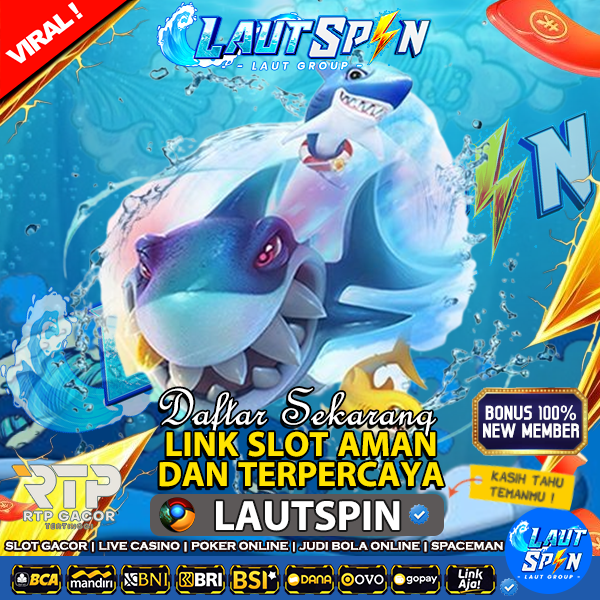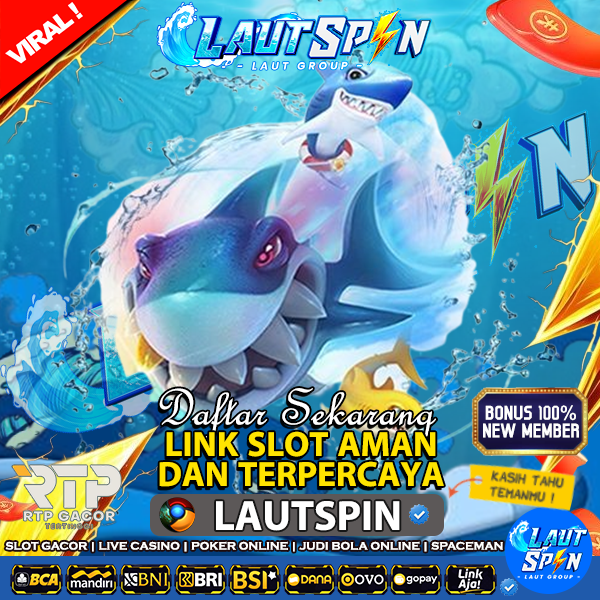Banyak diminati. 14,6k orang telah bergabung dalam 24 jam terakhir.
Harga: DP 50 + 50
Normal: Rp 100.000+
Diskon segera berahir 22:55:55
LAUTSPIN Daftar Situs Slot Gacor Super Scatter Olympus X1000
LAUTSPIN Situs Resmi Agen Slot Gacor Super Scatter dengan sistem metode pembayaran terlengkap dan pastinya winrate super tinggi melalui link rtp slot gacor hari ini slot olympus gampang jp x1000.
Star Seller
Star Sellers have an outstanding track record for providing a great customer experience—they consistently earned 5-star reviews, shipped orders on time, and replied quickly to any messages they received.
-
1. Enter Name/Text
2. Color of Yarn (Default color is white yarn if none selected)
*This is oversized jumper, select one size smaller for a more fitting look0/1024
You can only make an offer when buying a single item
Star Seller. Penjual ini secara konsisten mendapatkan ulasan bintang 5, mengirim tepat waktu, dan membalas dengan cepat setiap pesan yang mereka terima.
Highlights
LAUTSPIN Situs Resmi Agen Slot Gacor Super Scatter dengan sistem metode pembayaran terlengkap dan pastinya winrate super tinggi melalui link rtp slot gacor hari ini slot olympus gampang jp x1000.
-
Pesan hari ini dan akan tiba pada: Sep 28-Okt 7
Kami hanya menyediakan link akses SLOT SEABANK resmi LAUTSPIN , dengan berbagai kelengkapan seperti bonus new member serta akses bocoran kemenangan hari ini dengan akurat.
-
Pengembalian dan penukaran tidak diterima
Namun, silakan hubungi saya jika Anda memiliki masalah dengan pesanan Anda
-
Cost to ship: Rp 25.000
-
Ships from: Indonesia
There was a problem calculating your shipping. Please try again.
LAUTSPIN Perlindungan Pembelian
Berbelanja dengan percaya diri di LAUTSPIN , mengetahui jika terjadi kesalahan pada pesanan, kami siap membantu Anda untuk semua pembelian yang memenuhi syarat & Ketentuan berlaku.
see program terms
Captcha failed to load. Try using a different browser or disabling ad blockers.
4.9 out of 5
(10.5K reviews)
All reviews are from verified buyers
Seruu, Member baru saja uda langsung di kasih kejutan maxwin!
Situs SLOT SEABANK terpercaya hingga bergaransi kekalahan tanpa modal besar bisa main lama dan link akses gampang!
Hanya di situs LAUTSPIN yang bisa kasih kesempatan menang dan bocoran SLOT SEABANK malam ini!
Sangatt senang main di LAUTSPIN , transaksi deposit dan withdraw tercepat tanpa menunggu waktu lama sat set langsung masuk.
Photos from reviews

This seller usually responds within 24 hours.
Smooth shipping Has a history of shipping on time with tracking.
Speedy replies Has a history of replying to messages quickly.
Rave reviews Average review rating is 4.8 or higher.




